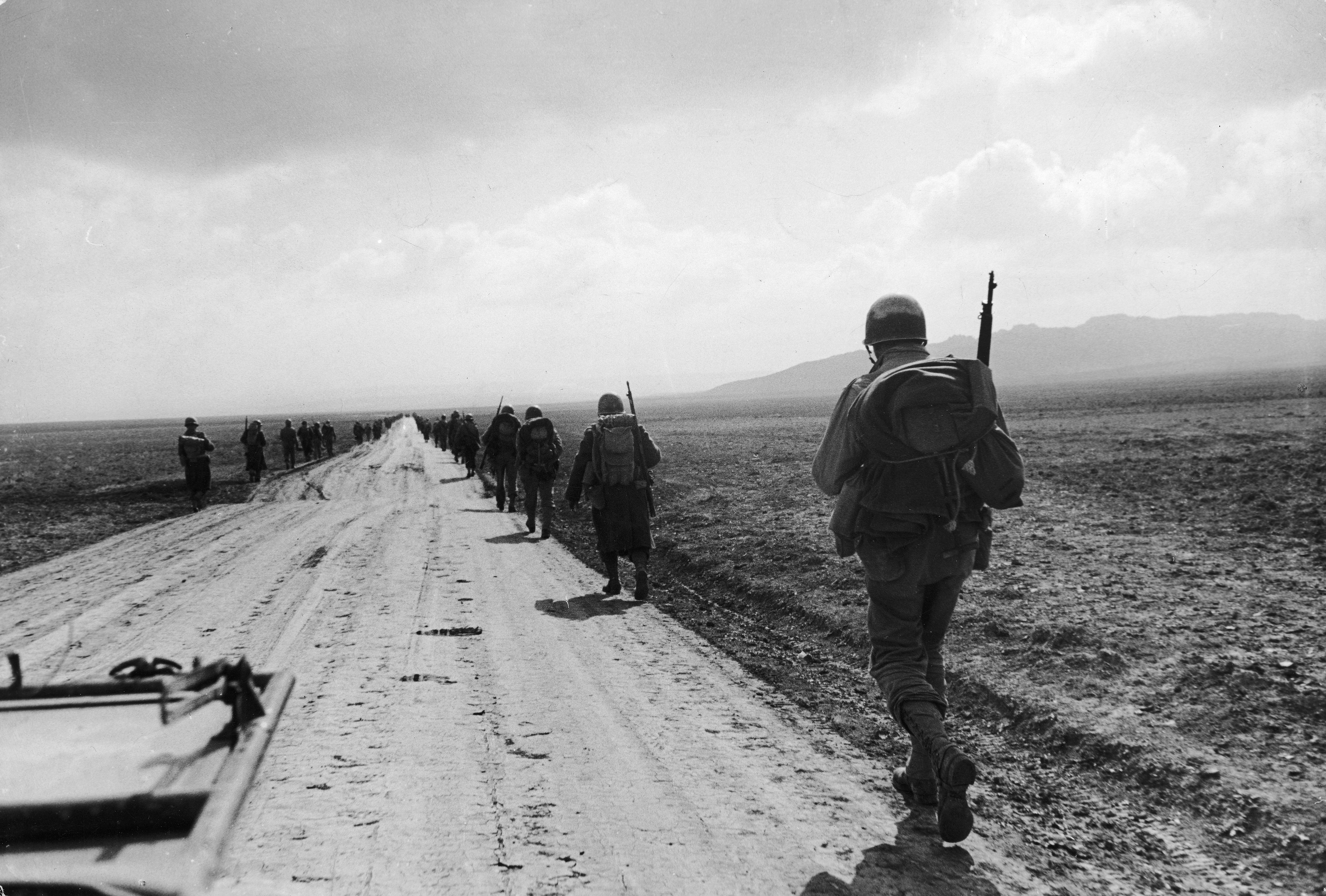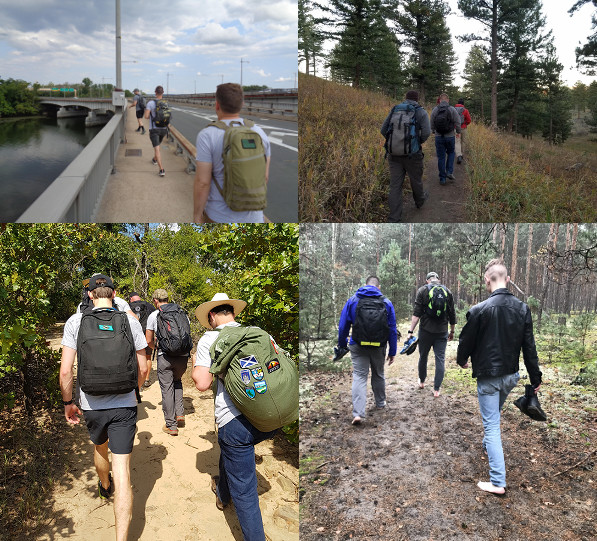
With our archives now 3,500+ articles deep, we’ve decided to republish a classic piece each Friday to help our newer readers discover some of the best, evergreen gems from the past. This article was originally published in October 2017.
I hate cardio.
Like some men who feel similarly, my hatred for cardio goes back to my sports playing days where running and sprinting were used by coaches as a form of tough love, i.e., punishment.
Mess up a play? Go run a lap. No, make that three.
Didn’t go hard enough during practice? 50 burpees for you.
Simply did something to irritate the coach? 40 gassers after practice.
While I respect men who can run long distances or who enjoy HIIT sessions, they’re like aliens from another planet to me. I just don’t understand the sadistic pleasure they take in cardio — “runner’s high” be damned.
Despite my aversion to cardio, I still made it a part of my workout routine because I knew it was good for me. But I usually bellyached about it. That is until I discovered a type of cardio work that I don’t despise and actually enjoy and look forward to doing. A type of cardio that has a bunch of other benefits besides heart health, to boot.
What is this wonder exercise?
Why rucking, of course.
Never heard of it or considered doing it? Take a seat, my brother in the hatred-of-running lodge. You’ll want to read this.
What Is Rucking?
Rucking is simple. So simple, it’s stupid.
Get a backpack.
Put some weight in said backpack.
Put on the backpack.
Start walking.
That’s it.
Rucking has its origins in the military, where soldiers wear a rucksack (another word for backpack) filled with provisions and equipment and then march with it for hours or even days on end. Roman legionaries rucked. Spartans rucked. WWII GIs rucked.
Modern soldiers ruck with packs that can weigh 100 pounds or more. As Jason McCarthy, a former Green Beret and the founder of GoRuck told me in my podcast with him, “rucking is the foundation of all special forces training.”
Thanks to GoRuck — a company that manufactures rucksacks and puts on rucking-centered challenges — rucking has become a popular fitness activity amongst civilians. Their events have introduced thousands of people to the idea of walking around with a heavy backpack while doing hard things like carrying logs and doing push-ups.
While GoRuck events are designed to push people physically and mentally in order to show participants they’re stronger than they think, you can ruck on your own without pummeling yourself into pulp, and while still accruing a significant boost to the health of your body and psyche.
Listen to our podcast with Josh Bryant all about the benefits of rucking, as well as how to get started:
The Benefits of Rucking
While rucking will feel fairly easy while you’re doing it, don’t be deceived. Taking a stroll with a weighted backpack imparts a lot of benefits to body, mind, and spirit:
Rucking Helps Your Heart
Rucking elevates your heart rate compared to regular walking (so it counts as cardio!) and has an effect on your ticker that’s comparable to jogging. Rucking also improves your all-around work capacity and endurance. Gaining the ability to cover ground under load builds a strong foundation of fitness.
Rucking Burns More Calories Than Walking and Only a Little Less Than Running
If you hate to run, but still want to get the caloric burn that comes with running, rucking is the answer you’ve been looking for. In fact, you can burn about as many calories rucking as jogging.
If you’re a 200-lb man and run for an hour at 5 MPH (that’s about a 12:00 mile pace), you’ll burn 755 calories.
Walking briskly (3.5 mph) for an hour burns 391 calories for a man of the same size.
Add a weight to your brisk hour-long walk (i.e., go rucking), and the research shows you can burn around 40-50% more calories. So our 200-lb man walking at a 3.5 mph pace while carrying 50 lbs of weight will burn around 585 calories. Not too far off from running, and you didn’t have to run! It’s a win-win!
If you’re already taking regular walks, start throwing a pack on when you do; you’ll burn thousands more calories over the course of the year.
Rucking Is Less Stressful on the Body Than Running
Part of the reason many people hate running is the stress it puts on your body, especially your knees. When you run, every stride you take can put between seven and twelve times your bodyweight onto your knees. That’s a lot of force. And if your stride is off or if you have flat feet, the repeated high impact of running can result in knee and joint pain. In fact, the stress that running puts on the joints gives long-distance running a fairly high injury rate — anywhere from 20 to 70 percent according to the British Journal of Sports Medicine.
With rucking, you’re just putting two to three times your bodyweight onto your knees with each step, plus whatever weight is on your back. It’s much less taxing on your body.
The reduced stress on my joints and tendons is the big draw for me with rucking, especially as I get older. I’ve injured myself several times while running and sprinting in my 30s. And long-distance runs leave the joints in my knees and hips aching for a few days after the run is over.
Now, I’m sure with some time, I could build up the conditioning that would allow me to sprint and run without the pain, but it’s just not something I want to do right now because my focus is on getting strong with barbell lifts.
So to get the aerobic conditioning that comes from running without the stress that running puts on the body, I ruck. Even after a long, hard ruck, I don’t feel much pain or discomfort in my lower body. I might have a bit of muscle soreness, but none of the aches and pains in my joints.
Rucking Builds Strength
Just as the legendary ancient wrestler Milo of Croton got stronger by carrying a bull on his shoulders, you’ll get stronger from carrying a weighted ruck.
The added weight on your back gives your lower body a good workout. I’ll often feel a little sore in my hamstrings and quads after I ruck. Doubly so, if my ruck took me up and down hills.
Where you’ll really get a strength workout from rucking is on your upper body. As McCarthy told me during my podcast interview with him, “people in the military, they have big strong backs. Not because there’s a back machine at the military gyms that’s exclusive to those. It’s because there’s more time under weight.” After a long ruck, my traps are always smoked.
Even your core gets worked from rucking, as it activates to stabilize the weight.
Rucking Improves Your Posture
If you’ve developed Quasimodo shoulders thanks to hours of slumping at a desk each day, rucking is the perfect antidote. The weight of the backpack actually pulls your shoulders and back into proper alignment and puts you into proper posture. As you ruck more and more, you’ll be training your body to stay in that optimal position even when you’re not rucking.
Rucking Gets You Outside
If you want to increase your overall health and wellbeing, you need to up your dose of “Vitamin N” by spending time in nature. Studies have shown that spending time outdoors can decrease stress, ward off depression, reduce obesity, boost the immune system, and enhance cognitive abilities. You can compound the health benefits of being in nature by turning your wilderness jaunts into a ruck.

You can even ruck with your kids! It not only gives you good bonding time, but gets them outside into nature and instills a love of fitness at an early age. Don’t throw 50 lbs into your kiddo’s pack of course; a few rocks will do.
The nature factor is one of my favorite parts of rucking. You’ll usually find me rucking on Turkey Mountain here in Tulsa. While not technically a mountain, it’s a fairly large hill that that’s filled with miles of wooded trails. I sometimes forget I’m in the city while I’m rucking there. I always feel rejuvenated and refreshed after an hour-long ruck in the great outdoors.
Rucking Gets You Social
Humans are social animals. We get sad and depressed when we’re lonely. Even if you’re an introvert, you need a bit of social connection to stave off the funk that comes from excessive isolation.
Research has shown that one of the best ways to quickly get people feeling connected is to have them move in unison together either through dance or exercise. But here’s the thing with most exercising — it’s not all that conducive to socialization. Yeah, you can run in a group, but you usually end up running alone together. Either your running partners are faster or slower than you or it’s hard to have a good conversation because you’re huffing and puffing so much.
With rucking, you get the bonding benefit of moving together in a group, along with the ability to talk without gasping. Rucking with a bunch of folks is one of my favorite activities. In fact, back in September I met up with area members of The Strenuous Life for a 2-hour ruck here in Tulsa (at Turkey Mountain, of course). A dozen men showed up and it was great chatting and getting to know them while getting in a workout in the woods. Talk about a health and wellbeing force multiplier!

Rucking has proven a popular activity for Strenuous Life meet-ups from Washington D.C. to Denver and Tulsa, and even Poland! (The lads in Poland have removed their shoes to complete part of one of the TSL Agons or weekly challenges.)
If you don’t have any friends, rucking is a great way to make some. There are ruck groups in most major cities in America. Just do a search on Google or on Facebook. There’s even a group here in Tulsa that gets together once a week to ruck.
Rucking Prepares You for an Emergency
So you’ve put together a bug-out bag and/or a get-home bag. But if stuff really hit the fan, would you be able to carry that bag for miles and miles as you try to get the hell out of dodge?
The ability to march under weight is a highly functional physical ability and a necessary survival skill. Theodore Roosevelt and JFK thought every man should be able to walk 50 miles in 20 hours — and it’s even more worthy to be able to do such while carrying a pack. Even if you never have to go quite that far, regular rucking prepares you to stay mobile in an emergency.
How to Get Started With Rucking
It doesn’t take much to get started with rucking. You just need some weight, a comfortable backpack sturdy enough to hold that weight, and some time.
How Much Weight to Use
If you’re just starting out with rucking or it’s been awhile since you’ve done much physical activity, start with a weight that’s about 10% of your bodyweight. So if you’re a 200-pound man, start with 20 pounds in your ruck. Each week, add 5 pounds until you get up to about 35-50 pounds. McCarthy doesn’t recommend going above this amount unless you’re training for the military, especially for selection to special forces. It will put too much stress on your body.
What to Use for Weight
For weight, use whatever you have on hand. Dumbbells, iron plates, sandbags, and bricks (duct-taped together) work. So do rocks you find along the trail you’re hiking. GoRuck also manufactures weighted plates for this purpose.
How Often/Long to Ruck
I try to get in at least one ruck a week on one of my weightlifting rest days. It keeps me active, but doesn’t interfere with my recovery time. You can do more or less.
What’s nice about rucking is that since it’s relatively low impact, you could do it every day if you wanted.
If you’re just starting out, begin with a 30-minute ruck. That’s probably a walk or two around the neighborhood block. Slowly build up to an hour or more.
Get Out There and Ruck
Cardio is an important part of overall health and well-being. But if you’ve avoided cardio because you hate the options typically put out there, give rucking a try. You get all the benefits, but without the agony. And it’s cheap and accessible to get started.
Of course, if you’re ex-military, you may have the same kind of association with rucking that I do with running; having sweated through it under orders, you can’t imagine ever doing it again for “fun”! But for civilian folk out there, this may be your new favorite workout and hobby.
If you’re looking for an alternative to rucking, make sure to check out the heavyhands workout.


